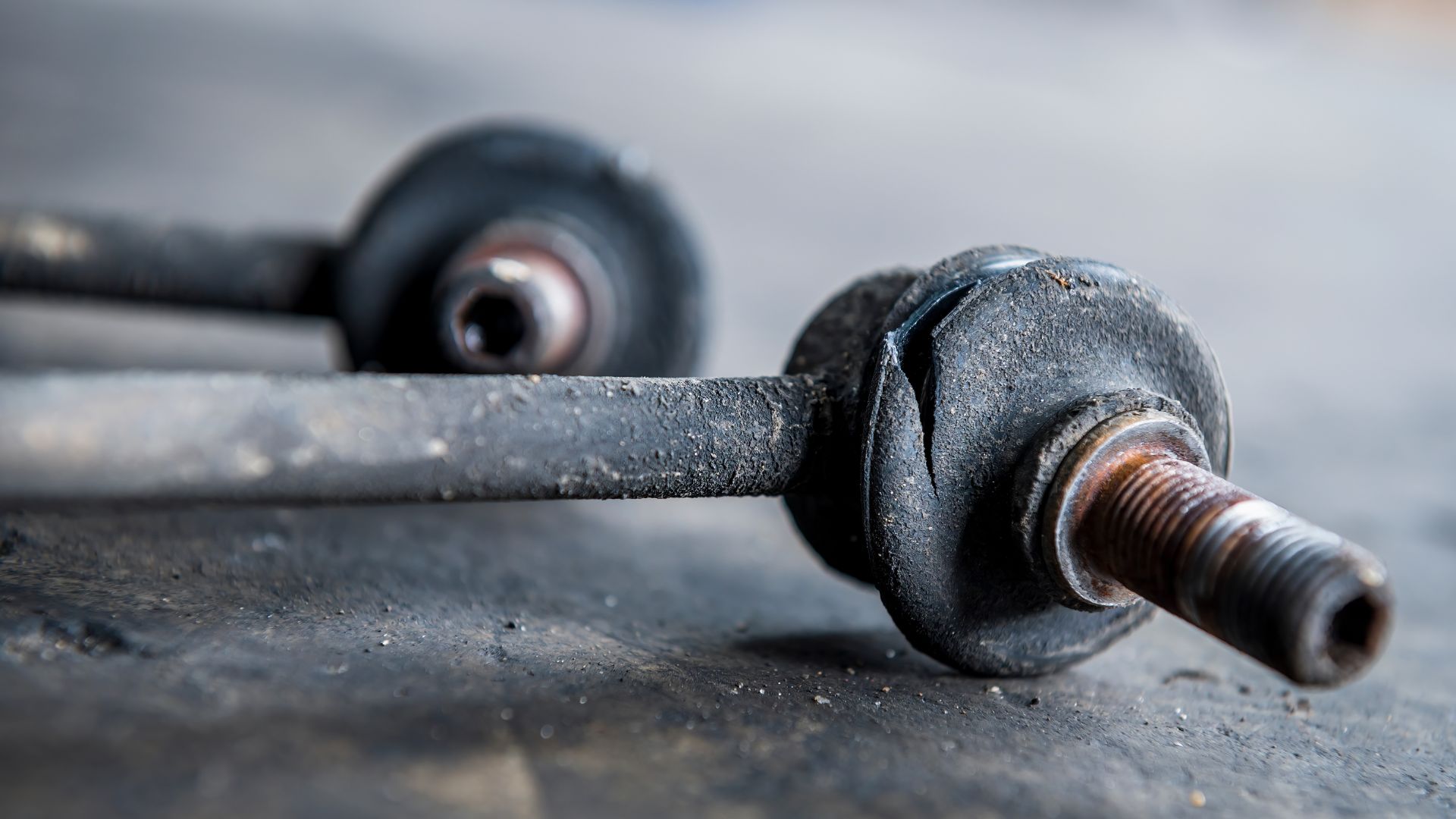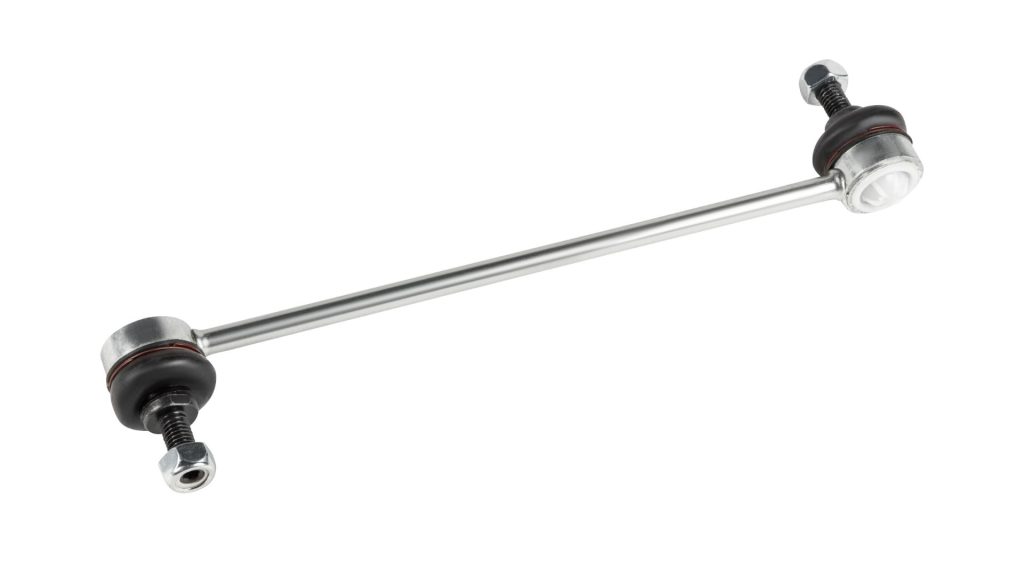Bad sway link symptoms — causes and fixes
Recognize signs of bad sway link symptoms.

A sway bar is a thin piece of tubular metal bolted to the suspension on each side of the vehicle. It is responsible for distributing the weight of your vehicle to both sides of the suspension. It connects the wheels on opposite sides of the car.
If your car moves through a turn, the sway bar keeps the vehicle level by reducing body roll through the transfer of car weight to the outside wheels. The sway bar also maintains solid contact with the road’s surface through the compression of the suspension parts on the inside wheels. It can get broken or damaged and can significantly affect the handling of your vehicle.
It is essential to understand bad sway link symptoms, so you can replace them for better road safety. In this article, we will discuss the bad sway bar link symptoms and their functions.
What is the purpose of a sway bar?

The sway bar keeps the vehicle from rolling over and losing control. Your car typically moves to one side when going around a turn, and this phenomenon is known as a sway or body roll. However, the sway bar controls the suspension to level out the body roll; In turn, your vehicle remains leveled and in control.
Usually, if you take a turn, the body roll occurs to the outside of the turn, putting the weight of the vehicle on the outside wheels. This act causes the suspension on the outer wheels to compress. You will notice a rising motion on the wheels inside the turn, causing the suspension to extend.
If you move to one side and sway during a turn, your car will also. However, the sway bar prevents the car from getting out of control. It pushes the inside wheels downwards to compress the suspension keeping the tires in contact with the road at all times.
If the sway bar does not distribute the car’s weight across all four tires, some of the tires will lose contact with the road surface and cause you to lose control over the vehicle.
Symptoms of the bad sway bar link

Sway bar links usually have a service life span of approximately 50,000 miles, depending on how the vehicle is driven and factors like road conditions. Broken bar links can significantly affect car handling and typically make unusual noises when the vehicle is moving.
The sway bar, links, and bushings are easy to inspect and are usually the first suspension parts to check if there is a problem with the suspensions. Some of the symptoms of a bad sway bar link include the following;
Unexpected handling feature
A broken sway bar link will affect your vehicle’s handling, especially when you are turning corners or driving on roads with bends. The sway bar has to improve grip and cornering control by transferring some of the car’s weight to the inside wheels when cornering. The sway bar can do this by resisting the twisting force applied to it and transferring the force to the inside wheels.
If the sway bar links and bushings get worn out, it will adversely affect the ability of the sway bar to absorb the forces applied to it. This leads to an unexpected handling trait that increases oversteer and understeer. However, it depends on whether the damaged drop links are on the front or back sway bar.
Unusual noises coming from the suspension
A squeaking noise from the tire area when driving over speed bumps or rough surfaces is a common symptom of bad sway bar links. You can typically notice it during hot or dry weather. As the rubber bushings in the sway bar links degrade over time, they become hard and dry.
While driving, the bushings will move in response to the car’s movement. If they have already dried out, they will make squeaky noise as they move against the metal suspension components. You can quickly resolve this problem by replacing the damaged sway bar links and bushings.
Applying silicone grease to the rubber bushings can temporarily stop the squeaking noises. However, this is for a short-term fix, and for safety reasons, you should replace the worn-out suspension parts immediately.
Clunking noise when going over speed bumps and potholes
If you notice clunking noise from the suspension, it is a typical telltale sign that you have a bad sway bar link or bushings. You can usually hear this sound when you drive over speed bumps or an uneven road surface. This sound is generally caused by loose sway bar bushings that no longer hold the sway bar securely and are not preventing it from moving around.
If you go over a speed bump, the sway bar will bounce against the subframe, and the broken sway bar links move around more than they should, producing a clunking sound. This clunking noise can result from worn control arm ball joints and shock absorbers.
Visibly worn-out sway bar links
A common symptom of a damaged sway bar link is determined by visual inspection, which is the best way to know if there is a problem in the sway bar link and not other components in the suspension. If the link gets worn out, it will attach to the suspension on one end and may not be attached to the sway bar on the other.
If the bushing is missing or damaged, it will be apparent upon a visual inspection. Each end of the sway bar link has a series of washers, nuts, and bushings holding the link to the sway bar on one end and the suspension on the other. If the link gets broken or the bushings are missing or torn, they need to get replaced.
Excessive swerving problems.
If your vehicle swerved at the time of driving, it indicates that you have damaged sway bar links. If the tires lose their grip, the wheels cannot generate enough traction. This will make the car swerve in a direction during acceleration.
Why should you replace your sway bar links?

If you notice the symptoms of a bad sway bar link and other suspension components, do not let it go untreated. Suspension system problems tend to turn into more significant issues and more expensive repairs if they are not replaced or repaired.
Sway bar links transfer the force of motion from the wheels to the sway bar and the rest of the suspension system. If a sway bar link becomes damaged, the control ability of your car and the safety of your passengers are at risk. Some sway bar links require replacement upon wearing out, while others have bushings you can replace.
Troubleshooting sway bar problems
The sway bar link joints are the most common places for wear and tear. The sway bar bushings also wear out. These bushings wrap around the sway bar and are found underneath the brackets that secure it to the subframe.
To inspect the sway bar lines correctly, you will have to jack up the front or back of the vehicle. This depends on which sway bar you are checking. The following are procedures to follow when diagnosing front sway bar problems.
- Drive your car around corners and do so at a quick speed rate. It would help to consider how the chassis and steering respond to your inputs. If the vehicle feels vague and goes from stable to unstable regularly, the problem may be worn-out bushings or broken drop links.
- Listen carefully for rattling and clunking noise from the front end. Numerous things can cause a car’s front end to make unusual noises. One of which is a faulty sway bar. If the sway bar drop link gets damaged or has worn bushings, the sway bar may move around and make clunking noises when the car is driven around corners or over bumps.
- Carry out a visual inspection of the sway bar and other suspension components. Loosen the lug from the front wheels, raise the vehicle with a floor jack and support it with a jack stand. Remove the lug nuts and wheels.
- Inspect the sway bar drop links, the short components that come off the sway bar’s end at a right angle, and bolt them to the suspension. Ensure that the links are not broken, the bolts are tight, and the bushings are in good condition. You should also inspect the brakes that hold the center part of the bar to the chassis.
How much does it cost to replace a sway bar?
The average sway bar replacement cost is between $125 and $100, with labor costs making up to $50 and the part costing between $55 and $220. You do not usually need a new sway bar. Most vehicles require a new sway bar end link or stabilizer bushings.
Our take
The most common symptoms of a bad sway bar are loss of handling when cornering and rattling noise when driving on a bumpy road. You can also notice excessive body roll when cornering.
If you notice these symptoms, it suggests that your sway bar link or bushings aren’t functioning correctly. It would help if you had it inspected by a qualified mechanic to fix the damage.
Can you drive with a bad sway bar link?
We do not recommend driving with a bad sway bar link. However, you can, but you will experience poor handling performance, and the vehicle will not steer correctly.
What happens if your sway bar link is loose?
If your sway bar link is loose, the steering will feel different, and the vehicle will start rolling around corners.
What does a bad sway bar end link sound like?
A bad sway end link sounds like a clunking or squeaking noise while driving over bumps or potholes.